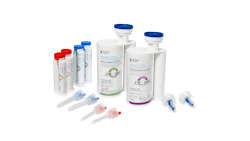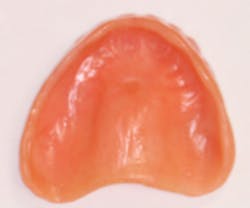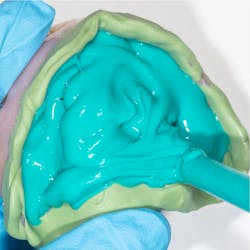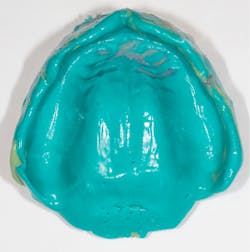Application of impression material: Easy and secure with less waste
Dr. Lori Trost, a dentist in Red Bud, Illinois, tested Aquasil Ultra+ extensively. She talks about her experiences and describes what has changed for her and her team in conventional impression-taking.
How long have you been using Aquasil Ultra+ as an impression material?
Honestly, I can’t remember a time when I didn't use Aquasil Ultra+. Regardless of whether you're a digital dentist or not, there will be times when you must use a very high-quality impression material. I want to have a material that has amazing tear strength, mix and consistency, quality, and delivery. More importantly for me, I must have a material that has a specific hydrophilicity that I can rely on. I need that material to perform even in hard-to-reach areas. Aquasil Ultra+ checks those boxes.
Related reading
Product review: Aquasil Ultra Cordless Impression System
Do you have experience with other impression materials?
Yes, and the difference that I found between those and Aquasil Ultra+ was the consistency and mixing delivery, as well as the colors. That's an important factor to consider, which colors are better and easier for the scanners to read in the following workflow. I've worked with all of the top brands. People come back to what works best in their hands and what their lab knows they can work well with. Many of the laboratories request that dentists use a high-quality material like Aquasil Ultra+.
What is Aquasil Ultra+ particularly suitable for?
The emerging areas right now are in the field of implant dentistry—looking at angulation in the positioning of an implant. For example, if you have to do an open tray method because of different heights that require that level of room and enter closer restorative space, you've got to use an alternative, and digital scanning can't always answer to that. I need a performing material that can capture that space successfully. Special consideration is also given to undercuts or other unparallel areas where the material rebounds. Aquasil Ultra+ is an excellent and dependable choice.
Dentsply Sirona has now launched a new cartridge integrated system (NCIS) for the application of the material. You were one of the first to test it in practice. What was your initial impression? What is better now compared to the other cannulas mixing systems?
At this point, I must speak for my assistants, who have a lot more to do with using the NCIS. In general, choosing the right tip can be tricky. The new system is color coded, which leads to a more confident tip selection for the given procedure, provides for a more secure tip placement during material expressing, and saves time. My team appreciates having a more secure tip with this new design, and only bleeding once is a wonderful thing. Then you start to understand all these other benefits, like getting more material for more crown preparations and having less waste because of the shorter tip. Environmentally, this all plays out. I think my biggest takeaway is that I have a homogeneous mix of the materials. It's consistent, absolutely. It's a time saver because you can rely on this material to really perform each and every time. Whether it's in my hands or my assistants’ hands, we're not having to go back and redo impressions or delivery set-ups.
What influence does the new system have on the impression result for you?
Every impression you take must be timed correctly. You have a limited window of time in which to attempt to isolate the preparation, remove the cord to visualize the preparation margin, and rinse and air. It’s important that the timing for the impression-taking is right. Therefore, you need a consistent mix. You know momentarily that you're ready when you can place the tray. I've got my ideal situation, that mix is ready, and I can rely on that. A solid mix is a predictable mix. It comes out quicker and easier, and I like the speed of it as well. A lot of people don't realize that's such a critical factor, but it is. Working time is not violated and the procedure flows easier—that's a big deal.
How do your assistants rate the NCIS? Is it easier for them to apply?
Yes, it is much easier for them to apply the material and make sure that the tips are secure, thanks to the color coding. The tips are much more secure and that's a very big factor because a lot of the time, they’re kind of fighting with it. It helps raise their confidence and that helps me have more confidence in them. Ultimately, patients feel more secure that their dental team is delivering excellent care.
This may be a slightly provocative question: you use the conventional impression method with Aquasil Ultra+. How does this fit with the trend that dentistry is becoming increasingly digital? Where do you see the very specific advantages of this impression method compared to intraoral scanning?
I think we're still going to need conventional impression materials as much as digital technologies. For example, I do a lot of digital dentures, so I still need to capture that special kind of impression taking. Sometimes I have to do a functional impression, which presses more on the mucosa/tissue. If so, I need an impression material to record that. Think of edentulous patients, which is a growing population. You cannot scan a completely edentulous jaw without any references in the mouth.
And thinking of implants, you're still going to need traditional impression material just for the very reason of the scan bodies and angulations. If you were doing conventional dentures, for example, you have to back up and start with an initial impression. I want to emphasize that an intraoral scanner doesn’t allow shortcuts, you still must create the data and detail, like the margin, isolate and expose it, and finally capture it. As with any scanner, you cannot expect the intraoral scanner to read through blood, saliva, the tongue, or deeper margins. However, a conventional impression material can flow and capture these areas and then be successfully removed. You often have to rely on that, and it's still the gold standard.



